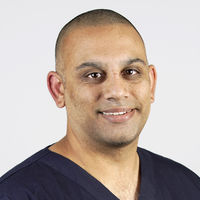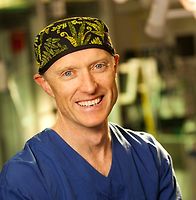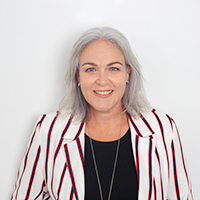Central Auckland > Private Hospitals & Specialists >
Intra
Private Service, Cardiology, Nephrology, Obstetrics and Gynaecology, Oncology, Radiology, Urology, Vascular Surgery
Today
6:30 AM to 5:00 PM.
Description
Intra is a leading provider of image-guided healthcare in Interventional Cardiology, Interventional Radiology and Cardiac Electrophysiology. Our innovative patient focused approach is minimally invasive with faster recovery times.
Your patient’s care is our top priority
We are passionate about your patients regaining their quality of life; walking the dog, lifting a grandchild, returning to work. We are here to help you do that. We work alongside you.
The Intra care philosophy is about using New Zealand’s top specialists and technology to treat inside the body. Clean. Precise. Proven.
Our care philosophy + clinical excellence + high-tech approach = patient results.
World leading image-guided healthcare
Intra has been leading the way in innovative image-guided healthcare since 1990. This includes performing the first Transcatheter Aortic Valve Implantation (TAVI) in Asia Pacific.
Our services cover three speciality areas with more than 30 practising specialists. Depending on the procedure, patients may go to Epsom or our North Harbour location.
We have New Zealand’s top specialists. They combine their trusted minds and hands to deliver a patient experience that is second-to-none.
Your patient is at the heart of everything we do
Intra is not just a facility. Our staff to patient ratios are high and our team of nurses, radiographers and administrative personnel are handpicked for their skills and experience to ensure we deliver the best patient care.
Staff
Our staff to patient ratios are high and our team of nurses, radiographers, anaesthetic technicians and administrative personnel are handpicked for their skills and experience to ensure we deliver the best patient care. You will be in safe and friendly hands throughout your stay.
Meet Intra's Leadership Team
Consultants
Note: Please note below that some people are not available at all locations.
-

Dr Peter Barr
Interventional Cardiologist, Cardiologist
Available at all locations.
-

Dr Rahul Bera
Interventional Radiologist, Radiologist
Available at all locations.
-

Dr Brendan Buckley
Interventional Radiologist, Interventional/Vascular Radiologist
Available at all locations.
-

Dr Kok Lam Chow
Interventional Cardiologist, Cardiologist
Available at all locations.
-

Dr Brigid Connor
Interventional Radiologist, Radiologist
Available at all locations.
-

Dr Luciana Marcondes
Paediatric Cardiologist/ Electrophysiologist, Cardiologist, Cardiologist Paediatric Electrophysiologist
Available at Mercy Hospital, 98 Mountain Road, Epsom, Auckland
-

Dr Rukshan Fernando
Interventional Radiologist, Radiologist
Available at all locations.
-

Dr Sarah Fitzsimons
Cardiologist
Available at all locations.
-

Dr Andrew Gavin
Cardiac Electrophysiologist, Cardiologist
Available at Mercy Hospital, 98 Mountain Road, Epsom, Auckland
-

Dr Ivor Gerber
Cardiologist
Available at all locations.
-

Dr Wil Harrison
Interventional Cardiologist, Cardiologist
Available at all locations.
-

Dr David Heaven
Cardiac Electrophysiologist, Cardiologist
Available at Mercy Hospital, 98 Mountain Road, Epsom, Auckland
-

Associate Professor Andrew Holden
Interventional/Vascular Radiologist, Interventional Radiologist
Available at Mercy Hospital, 98 Mountain Road, Epsom, Auckland
-

Dr Patrick Kay
Interventional Cardiologist
Available at all locations.
-

Assoc Prof Nigel Lever
Cardiologist, Cardiac Electrophysiologist
Available at Mercy Hospital, 98 Mountain Road, Epsom, Auckland
-

Dr Andrew Martin
Cardiologist, Cardiac Electrophysiologist, Adult Cardiologist /Electrophysiologist
Available at Mercy Hospital, 98 Mountain Road, Epsom, Auckland
-

Dr Stephen Merrilees
Radiologist, Interventional Radiologist
Available at all locations.
-

Dr Carl Muthu
Vascular Surgeon
Available at all locations.
-

Dr Matthew O'Connor
Cardiologist, Cardiac Electrophysiologist, Consultant Electrophysiologist
Available at Mercy Hospital, 98 Mountain Road, Epsom, Auckland
-

Dr Tharumenthiran Ramanathan
Cardiothoracic Surgeon
Available at Mercy Hospital, 98 Mountain Road, Epsom, Auckland
-

Prof Peter Ruygrok
Interventional Cardiologist, Cardiologist
Available at all locations.
-

Dr Tony Scott
Cardiologist
Available at all locations.
-

Dr Jithendra Somaratne
Interventional Cardiologist, Cardiologist
Available at all locations.
-

Dr Jamie Voss
Cardiologist / Cardiac Electrophysiologist, Cardiologist, Cardiac Electrophysiologist
Available at Mercy Hospital, 98 Mountain Road, Epsom, Auckland
-

Dr Cara Wasywich
Interventional Cardiologist, Cardiologist
Available at all locations.
-

Dr Jonathon White
Interventional Cardiologist, Cardiologist
Available at all locations.
How do I access this service?
Contact us
Please contact us directly on
+64 (09) 630 1961
or by email at admin@intracare.co.nz
Website / App
Visit our website www.intracare.co.nz
Referral Expectations
Your GP or specialist (e.g. cardiologist, urologist or medical oncologist) will refer you to one of the interventional specialists at Intra. The friendly staff at Intra will assist you with your insurance pre-approval process before your procedure.
Fees and Charges Categorisation
Fees apply
Fees and Charges Description
For all other types of medical insurance it is recommended that you seek pre-approval from your insurance company for your procedure.
Hours
6:30 AM to 5:00 PM.
| Mon – Fri | 6:30 AM – 5:00 PM |
|---|
Public Holidays: Closed ANZAC Day (25 Apr), King's Birthday (3 Jun), Matariki (28 Jun), Labour Day (28 Oct), Auckland Anniversary (27 Jan), Waitangi Day (6 Feb), Good Friday (18 Apr), Easter Sunday (20 Apr), Easter Monday (21 Apr).
Procedures / Treatments
At Intra we treat coronary artery narrowings, aortic stenosis, selected arrhythmias and selected other conditions. Minimally invasive catheter based treatments are preferred to conventional surgery because they are less invasive, there is a faster recovery, and generally fewer complications. To learn more please select from the links below: Coronary Angiography Coronary Angioplasty +/- Stenting (Percutaneous Coronary Intervention - PCI) Structural Heart Procedures Atrial Septal Defect (ASD) Closure Left Atrial Appendage Closure Patent Foramen Ovale (PFO) Closure Transcatheter Aortic Valve Implantation (TAVI) Transesophageal Echocardiogram (TOE)
At Intra we treat coronary artery narrowings, aortic stenosis, selected arrhythmias and selected other conditions. Minimally invasive catheter based treatments are preferred to conventional surgery because they are less invasive, there is a faster recovery, and generally fewer complications. To learn more please select from the links below: Coronary Angiography Coronary Angioplasty +/- Stenting (Percutaneous Coronary Intervention - PCI) Structural Heart Procedures Atrial Septal Defect (ASD) Closure Left Atrial Appendage Closure Patent Foramen Ovale (PFO) Closure Transcatheter Aortic Valve Implantation (TAVI) Transesophageal Echocardiogram (TOE)
At Intra we treat coronary artery narrowings, aortic stenosis, selected arrhythmias and selected other conditions.
Minimally invasive catheter based treatments are preferred to conventional surgery because they are less invasive, there is a faster recovery, and generally fewer complications.
To learn more please select from the links below:
At Intra we provide an increasing number of procedures to treat peripheral vascular, kidney, liver and uterine conditions. Image guided treatment allows patients to recover faster, with less discomfort and lower complication rates than conventional surgery. GPs can refer patients to an interventional radiologist who can assess a patient’s suitability for image-guided treatment. For further information regarding your procedure, please click on the links blow: Endovascular Aneurysm Repair (EVAR) Leg Arteriogram (peripheral angiography) Liver Ablation Liver Biopsy Renal Ablation Renal Angiography and Angioplasty Renal Biopsy Sclerotherapy Uterine Fibroid Embolisation Varicocele Embolisation
At Intra we provide an increasing number of procedures to treat peripheral vascular, kidney, liver and uterine conditions. Image guided treatment allows patients to recover faster, with less discomfort and lower complication rates than conventional surgery. GPs can refer patients to an interventional radiologist who can assess a patient’s suitability for image-guided treatment. For further information regarding your procedure, please click on the links blow: Endovascular Aneurysm Repair (EVAR) Leg Arteriogram (peripheral angiography) Liver Ablation Liver Biopsy Renal Ablation Renal Angiography and Angioplasty Renal Biopsy Sclerotherapy Uterine Fibroid Embolisation Varicocele Embolisation
At Intra we provide an increasing number of procedures to treat peripheral vascular, kidney, liver and uterine conditions.
Image guided treatment allows patients to recover faster, with less discomfort and lower complication rates than conventional surgery. GPs can refer patients to an interventional radiologist who can assess a patient’s suitability for image-guided treatment.
For further information regarding your procedure, please click on the links blow:
Interventional oncology can offer patients additional treatment options following surgery or chemotherapy. In some cases targeted image guided procedures can replace conventional surgery. These procedures often have fewer complications and less pain than conventional treatments, and allow patients to return to normal activity more quickly. At Intra we offer the selected oncology treatments listed below. To read further information about your procedure, please click on the appropriate link: Peripherally Inserted Central Catheter (PICC) Line Insertion Port-a-cath Insertion and Removal Selective Internal Radiation Therapy (SIRT) Transcatheter Arterial Chemoembolisation (TACE)
Interventional oncology can offer patients additional treatment options following surgery or chemotherapy. In some cases targeted image guided procedures can replace conventional surgery. These procedures often have fewer complications and less pain than conventional treatments, and allow patients to return to normal activity more quickly. At Intra we offer the selected oncology treatments listed below. To read further information about your procedure, please click on the appropriate link: Peripherally Inserted Central Catheter (PICC) Line Insertion Port-a-cath Insertion and Removal Selective Internal Radiation Therapy (SIRT) Transcatheter Arterial Chemoembolisation (TACE)
Interventional oncology can offer patients additional treatment options following surgery or chemotherapy. In some cases targeted image guided procedures can replace conventional surgery. These procedures often have fewer complications and less pain than conventional treatments, and allow patients to return to normal activity more quickly.
At Intra we offer the selected oncology treatments listed below. To read further information about your procedure, please click on the appropriate link:
Coronary angiography identifies the presence, extent and location of coronary artery narrowings, due to plaque build-up. Other tests performed during the coronary angiogram include measuring pressures within the heart chambers, checking function of some of the valves and checking how well the main pumping chamber (left ventricle) is working. Where a narrowing is identified in a coronary artery during a coronary angiogram, the cardiologist may treat the lesion using a stent (fine mesh tube). This is known as Percutaneous Coronary Intervention (PCI). Stents Drug eluting, permanent stents are the most frequently inserted stents with excellent results achieved over years. These stents are coated with a medication to prevent or substantially reduce the chance of re-narrowing and the need for repeat treatment.
Coronary angiography identifies the presence, extent and location of coronary artery narrowings, due to plaque build-up. Other tests performed during the coronary angiogram include measuring pressures within the heart chambers, checking function of some of the valves and checking how well the main pumping chamber (left ventricle) is working. Where a narrowing is identified in a coronary artery during a coronary angiogram, the cardiologist may treat the lesion using a stent (fine mesh tube). This is known as Percutaneous Coronary Intervention (PCI). Stents Drug eluting, permanent stents are the most frequently inserted stents with excellent results achieved over years. These stents are coated with a medication to prevent or substantially reduce the chance of re-narrowing and the need for repeat treatment.
Where a narrowing is identified in a coronary artery during a coronary angiogram, the cardiologist may treat the lesion using a stent (fine mesh tube). This is known as Percutaneous Coronary Intervention (PCI).
Stents
Drug eluting, permanent stents are the most frequently inserted stents with excellent results achieved over years. These stents are coated with a medication to prevent or substantially reduce the chance of re-narrowing and the need for repeat treatment.
Diagnostic electrophysiology (EP) procedures are conducted to diagnose cardiac arrythmias. Search our website for more information on Electrophysiology (EP) Procedures: Electrophysiology - Atrial Flutter Ablation Electrophysiology - AV Junction Ablation Electrophysiology - Direct Current Cardioversion Electrophysiology - Pacemaker Implantation Electrophysiology - Premature Ventricular Complex/VT Ablation Electrophysiology - Pulmonary Vein Isolation Electrophysiology - Supraventricular Tachycardia Study and Ablation
Diagnostic electrophysiology (EP) procedures are conducted to diagnose cardiac arrythmias. Search our website for more information on Electrophysiology (EP) Procedures: Electrophysiology - Atrial Flutter Ablation Electrophysiology - AV Junction Ablation Electrophysiology - Direct Current Cardioversion Electrophysiology - Pacemaker Implantation Electrophysiology - Premature Ventricular Complex/VT Ablation Electrophysiology - Pulmonary Vein Isolation Electrophysiology - Supraventricular Tachycardia Study and Ablation
Diagnostic electrophysiology (EP) procedures are conducted to diagnose cardiac arrythmias.
Search our website for more information on
- Electrophysiology (EP) Procedures:
- Electrophysiology - Atrial Flutter Ablation
- Electrophysiology - AV Junction Ablation
- Electrophysiology - Direct Current Cardioversion
- Electrophysiology - Pacemaker Implantation
- Electrophysiology - Premature Ventricular Complex/VT Ablation
- Electrophysiology - Pulmonary Vein Isolation
- Electrophysiology - Supraventricular Tachycardia Study and Ablation
An atrial septal defect (ASD) is a congenital heart defect in which the wall that separates the upper heart chambers (atria) does not completely meet and close, thus leaving a hole or defect (hole-in-the-heart). Blood is then able to flow from the left to the right atrium. This is called a shunt. If too much blood moves to the right side of the heart, blood pressure in the lungs may build up and cause irreversible damage. Many problems can occur if the shunt is large, but small atrial septal defects often cause very few problems and may be found much later in life. When the patient has no other congenital defect, symptoms may be absent, particularly in children. Symptoms may begin any time after birth through childhood and even in adulthood. Patients with an ASD are at an increased risk for developing a number of complications including: Atrial fibrillation (in adults) Right heart failure Pulmonary overcirculation Pulmonary hypertension Stroke. A procedure has been developed to close the defect without surgery. This involves placing an ASD closure device into the heart through tubes called catheters. The cardiologist makes a tiny surgical cut in the groin, then inserts the catheters into a blood vessel and up into the heart. The closure device is then placed across the ASD and the defect is closed.
An atrial septal defect (ASD) is a congenital heart defect in which the wall that separates the upper heart chambers (atria) does not completely meet and close, thus leaving a hole or defect (hole-in-the-heart). Blood is then able to flow from the left to the right atrium. This is called a shunt. If too much blood moves to the right side of the heart, blood pressure in the lungs may build up and cause irreversible damage. Many problems can occur if the shunt is large, but small atrial septal defects often cause very few problems and may be found much later in life. When the patient has no other congenital defect, symptoms may be absent, particularly in children. Symptoms may begin any time after birth through childhood and even in adulthood. Patients with an ASD are at an increased risk for developing a number of complications including: Atrial fibrillation (in adults) Right heart failure Pulmonary overcirculation Pulmonary hypertension Stroke. A procedure has been developed to close the defect without surgery. This involves placing an ASD closure device into the heart through tubes called catheters. The cardiologist makes a tiny surgical cut in the groin, then inserts the catheters into a blood vessel and up into the heart. The closure device is then placed across the ASD and the defect is closed.
An atrial septal defect (ASD) is a congenital heart defect in which the wall that separates the upper heart chambers (atria) does not completely meet and close, thus leaving a hole or defect (hole-in-the-heart).
Blood is then able to flow from the left to the right atrium. This is called a shunt. If too much blood moves to the right side of the heart, blood pressure in the lungs may build up and cause irreversible damage. Many problems can occur if the shunt is large, but small atrial septal defects often cause very few problems and may be found much later in life.
When the patient has no other congenital defect, symptoms may be absent, particularly in children. Symptoms may begin any time after birth through childhood and even in adulthood. Patients with an ASD are at an increased risk for developing a number of complications including:
- Atrial fibrillation (in adults)
- Right heart failure
- Pulmonary overcirculation
- Pulmonary hypertension
- Stroke.
A procedure has been developed to close the defect without surgery. This involves placing an ASD closure device into the heart through tubes called catheters. The cardiologist makes a tiny surgical cut in the groin, then inserts the catheters into a blood vessel and up into the heart. The closure device is then placed across the ASD and the defect is closed.
A patent foramen ovale (PFO) is a ‘flap’ also located between the atria of the heart but is not an abnormality as such. Normally this foramen ovale closes by itself 6 to 12 months after birth. When it does not close, it is known as a patent foramen ovale. It is present in 25% of adults but is more common (50%) in young people who have suffered a TIA or stroke. Unless a baby has other heart defects that cause symptoms, a PFO may not be diagnosed until adulthood. If you have a patent foramen ovale and are symptomatic, you will need to have the defect closed. In the past open heart surgery was the only option to close the defect. Nowadays, adults may be suitable for treatment using a minimally invasive, catheter based, approach. This approach is via the vein in the groin and does not require cardiopulmonary bypass, has an almost instant recovery, with a very low chance of complications. Click for more information about patent foramen ovale (PFO)
A patent foramen ovale (PFO) is a ‘flap’ also located between the atria of the heart but is not an abnormality as such. Normally this foramen ovale closes by itself 6 to 12 months after birth. When it does not close, it is known as a patent foramen ovale. It is present in 25% of adults but is more common (50%) in young people who have suffered a TIA or stroke. Unless a baby has other heart defects that cause symptoms, a PFO may not be diagnosed until adulthood. If you have a patent foramen ovale and are symptomatic, you will need to have the defect closed. In the past open heart surgery was the only option to close the defect. Nowadays, adults may be suitable for treatment using a minimally invasive, catheter based, approach. This approach is via the vein in the groin and does not require cardiopulmonary bypass, has an almost instant recovery, with a very low chance of complications. Click for more information about patent foramen ovale (PFO)
A patent foramen ovale (PFO) is a ‘flap’ also located between the atria of the heart but is not an abnormality as such. Normally this foramen ovale closes by itself 6 to 12 months after birth. When it does not close, it is known as a patent foramen ovale. It is present in 25% of adults but is more common (50%) in young people who have suffered a TIA or stroke.
Unless a baby has other heart defects that cause symptoms, a PFO may not be diagnosed until adulthood.
If you have a patent foramen ovale and are symptomatic, you will need to have the defect closed. In the past open heart surgery was the only option to close the defect. Nowadays, adults may be suitable for treatment using a minimally invasive, catheter based, approach. This approach is via the vein in the groin and does not require cardiopulmonary bypass, has an almost instant recovery, with a very low chance of complications.
Aortic stenosis is a disease where the aortic valve has calcium deposits building up on the valve leaflets causing them to be narrowed, rigid and obstructing the blood flow from the heart to the aorta and onward to the rest of the body. This condition makes your heart work harder to pump blood to your body. A TAVI is the implantation of an aortic valve without removing the diseased valve, performed under local anaesthesia. The TAVI approach is X-ray guided and delivers a fully expandable replacement valve to the valve site through a catheter. Once the new valve is expanded, it pushes the old valve leaflets out of the way and the tissue in the replacement valve takes over the normal function of the valve. Please click for information about TAVI
Aortic stenosis is a disease where the aortic valve has calcium deposits building up on the valve leaflets causing them to be narrowed, rigid and obstructing the blood flow from the heart to the aorta and onward to the rest of the body. This condition makes your heart work harder to pump blood to your body. A TAVI is the implantation of an aortic valve without removing the diseased valve, performed under local anaesthesia. The TAVI approach is X-ray guided and delivers a fully expandable replacement valve to the valve site through a catheter. Once the new valve is expanded, it pushes the old valve leaflets out of the way and the tissue in the replacement valve takes over the normal function of the valve. Please click for information about TAVI
Aortic stenosis is a disease where the aortic valve has calcium deposits building up on the valve leaflets causing them to be narrowed, rigid and obstructing the blood flow from the heart to the aorta and onward to the rest of the body. This condition makes your heart work harder to pump blood to your body.
A TAVI is the implantation of an aortic valve without removing the diseased valve, performed under local anaesthesia.
The TAVI approach is X-ray guided and delivers a fully expandable replacement valve to the valve site through a catheter. Once the new valve is expanded, it pushes the old valve leaflets out of the way and the tissue in the replacement valve takes over the normal function of the valve.
Disability Assistance
Wheelchair access, Wheelchair accessible toilet, Mobility parking space
Parking
Website
Contact Details
Mercy Hospital, 98 Mountain Road, Epsom, Auckland
Central Auckland
6:30 AM to 5:00 PM.
-
Phone
(09) 630 1961
-
Fax
(09) 630 1962
Email
Website
98 Mountain Road
Epsom
Auckland 1023
Street Address
98 Mountain Road
Epsom
Auckland 1023
Postal Address
PO Box 9911
Newmarket
Auckland. 1149
Northern Clinic - Southern Cross North Harbour Campus, 212 Wairau Road, Wairau Valley, Auckland
North Auckland
6:30 AM to 5:00 PM.
-
Phone
(09) 630 1961
-
Fax
(09) 630 1962
Email
Website
Was this page helpful?
This page was last updated at 3:35PM on December 5, 2023. This information is reviewed and edited by Intra.
